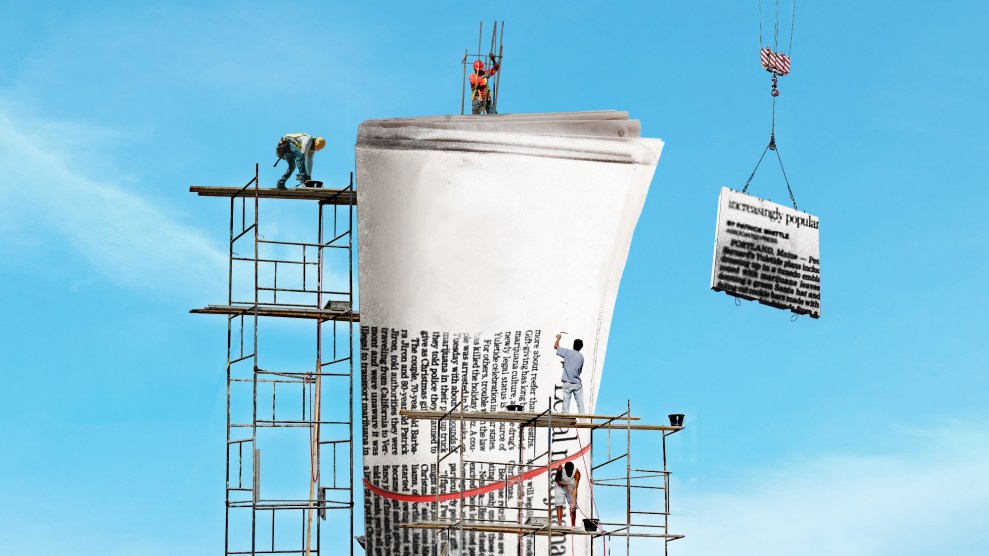When Al Gore announced this summer that he favors testing every prisoner and parolee in the nation for drugs, executives at PharmChem Laboratories had cause for celebration. The Silicon Valley company produces a Band-Aid-like patch that monitors sweat for traces of illegal substances, a device already used in thousands of parole, probation, and child custody cases nationwide. The testing proposed by Gore could provide PharmChem with a captive market of millions.
Introduced in the mid-1990s and cleared by the Food and Drug Administration, the patch seems to have many advantages over conventional urine testing. It’s cleaner and easier to use, it detects drugs continuously over a longer period of time, and it can’t be deceived by testees who drink jugloads of water to dilute their urine. Used by prison officials, family courts, and drug treatment centers from Bakersfield, California, to St. Johnsbury, Vermont, the patch’s findings can determine whether probationers lose their freedom or mothers lose custody of their children.
With so much at stake, the patch’s accuracy should be beyond doubt. The trouble is, a growing body of evidence raises serious questions about its reliability.
A recent study by the Naval Research Laboratory found that the patch can be permeated from the outside by minute traces of drugs, which can linger indefinitely on upholstery, clothing, or money. In addition, researchers found, alcohol swabbed on the skin before the patch is applied does not remove all traces of drugs. That means outside contamination could trigger false-positive readings.
The patch may already have wrongly implicated several substance-free people. The Lindesmith Center, a drug-policy think tank, has received reports of dozens of cases in which people received dirty patch results but clean urine tests. It’s possible that the patch simply caught substance abusers who somehow duped the urine analysis. But it’s also possible that one or more of the patch wearers were innocent — a danger that should give pause to authorities who are currently administering the patch.
“Government entities making decisions as serious as child custody have a responsibility to get accurate information, not junk science,” says Julian Gross, an attorney who works with the Lindesmith Center.
In Northern California, at least half a dozen parents have lost their children in cases involving contested patch tests. Sheryl Woodhall is one of them. Child welfare authorities required the former methamphetamine addict to submit to regular drug testing in 1997. Her urine tests were consistently clean, but several of her patches turned up dirty. On the basis of those results, officials recommended that her two youngest children be taken away from her.
“I swear on my life I wasn’t using anything,” says Woodhall. She says she later discovered her then-boyfriend was using speed, and she believes that her patch picked up traces of methamphetamine either from his body or his apartment.
To determine whether such a false-positive was possible, the judge hearing Woodhall’s case heard from a single expert witness: Neil Fortner, vice president of laboratory operations for PharmChem. Fortner assured the court that his employer’s patch was telling the truth. Woodhall’s parental rights were promptly revoked.
Fortner’s expertise has proved critical in convincing judges of the patch’s trustworthiness in at least half of the 30-odd court challenges to its accuracy. But some of his testimony fails to hold up under closer scrutiny. Fortner has stated repeatedly under oath that he has nearly completed a doctorate in neurochemistry at San Francisco State University. Officials at the university say Fortner has never been enrolled in any of their doctoral programs.
Undeterred by evidence that the patch may be error prone, PharmChem is currently seeking federal approval to market it for drug testing in private workplaces. But the patch’s record suggests it may need as much testing as the drug users it monitors. “You’re talking about sending people to jail,” says David Faigman, a professor at the University of California’s Hastings College of Law in San Francisco who specializes in forensic evidence. “The prosecution should have to demonstrate that the basis on which that judgment is made is reliable.”















